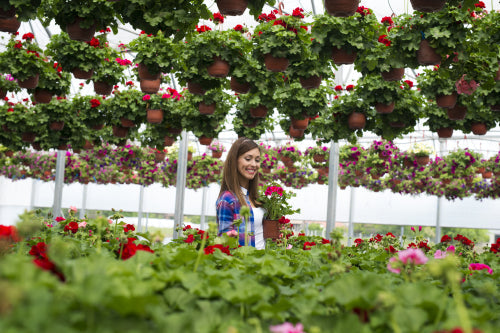Urban living often means sacrificing space, vertical gardening has emerged as a transformative solution. The demand for space-saving solutions is stronger than ever, and vertical gardening offers a unique opportunity to transform even the most compact urban homes into lush, green havens. From maximizing the use of limited square footage to contributing to environmental sustainability, vertical gardens are reshaping the way we think about home gardening. This article explores how vertical gardening is revolutionizing urban living and how it is becoming an essential element of modern city life.
What is Vertical Gardening?
Vertical gardening involves the practice of growing plants upwards, rather than horizontally, by utilizing vertical spaces such as walls, fences, balconies, or even specially designed frames. This method of gardening is especially popular in urban environments where floor space is limited but wall or vertical space is abundant. Vertical gardens can be used to grow a variety of plants, including flowers, herbs, vegetables, and even small trees, creating a vibrant and productive green space in the middle of a concrete jungle.
The beauty of vertical gardening lies in its ability to provide a high yield of plants within a confined space. Whether it's a vertical herb garden on your kitchen wall or a living green wall that acts as a stunning focal point in your living room, vertical gardening offers a sustainable way to bring nature indoors, even in the smallest urban apartments.
Why Vertical Gardening is Perfect for Urban Homes
1. Space Optimization
Urban living is synonymous with limited space. In many cities, small apartments, tiny balconies, and minimal outdoor areas are the norm. Vertical gardening solves this problem by allowing homeowners to take advantage of unused vertical spaces. By growing plants upwards on trellises, wall planters, or shelving units, people can maximize every square inch of available space.
In apartments with limited balcony space or even no outdoor area, a vertical garden can be an ideal solution for homeowners looking to grow their own food or add greenery to their homes. A well-designed vertical garden can fit on walls, windowsills, or even the ceiling, enabling homeowners to enjoy the benefits of plants without requiring significant floor space.
2. Aesthetic Appeal
One of the most striking benefits of vertical garden is its ability to enhance the aesthetic appeal of urban homes. Whether you choose to create a sleek, modern design or a more natural, rustic look, vertical gardens bring beauty and vibrancy to otherwise drab walls and unused spaces. The greenery acts as a natural decoration, helping to soften the harsh lines of modern architecture and add an organic touch to the space.
Vertical gardens can also contribute to the overall ambiance of a room, improving the atmosphere with the calming presence of plants. In an urban environment where concrete and steel dominate, having a vertical garden allows homeowners to reconnect with nature, creating a peaceful retreat in the heart of the city.
3. Sustainability and Environmental Benefits
The environmental impact of urban living is a pressing concern, with many cities facing pollution, poor air quality, and a lack of green spaces. Vertical gardens contribute to sustainability by helping reduce the urban heat island effect, improving air quality, and promoting biodiversity.
Vertical gardens can act as natural air purifiers by absorbing carbon dioxide and releasing oxygen. They can also filter out pollutants, making indoor air healthier to breathe. For urban dwellers who may not have access to large outdoor spaces or parks, vertical gardens offer an accessible way to promote environmental wellness.
Additionally, growing your own herbs, vegetables, and fruits in a vertical garden reduces the need for transportation, packaging, and chemicals often associated with store-bought produce. This sustainable approach to gardening helps reduce one's carbon footprint and supports a healthier, eco-friendly lifestyle.
Types of Vertical Gardens
There are many different ways to set up a vertical garden in an urban home, and the right option depends on the space, budget, and personal preferences of the homeowner. Here are a few popular types of vertical gardens:
1. Green Walls
Green walls, also known as living walls or vertical gardens, are large, vertical structures that support a wide range of plants. These walls are often modular and can be installed both indoors and outdoors. They are typically made up of trays, panels, or felt systems that hold the plants, soil, and irrigation system in place. Green walls are ideal for those who want to create a stunning visual statement and incorporate a large number of plants into their space.
Green walls are highly versatile and can be customized to fit a wide variety of design styles. Whether it's a sleek modern wall featuring succulent plants or a more rustic wall filled with cascading vines, a green wall brings nature into any urban environment.
2. Trellis and Climbing Plants
Trellises are a classic solution for vertical gardening. By using a simple structure made of wood, metal, or plastic, homeowners can grow climbing plants such as ivy, jasmine, or grapevines. Trellises are ideal for balconies or narrow walls and are relatively easy to install and maintain.
Climbing plants provide both beauty and functionality. In addition to enhancing the aesthetics of your home, they can also offer shade, privacy, and protection from the sun. Growing climbing plants on a trellis or fence allows you to create a lush, green backdrop while utilizing minimal space.
3. Vertical Planters and Shelving Units
Vertical planters and shelving units are perfect for smaller spaces where wall space is limited but there is still a desire to grow a variety of plants. These systems consist of vertical stacks of containers or shelves that can be used to hold plants. Some planters are designed to hang directly on the wall, while others can be free-standing, offering flexibility and ease of use.
These types of vertical gardens are perfect for growing herbs, small vegetables, or decorative flowers. By placing planters near windows or on balconies, homeowners can ensure their plants receive adequate sunlight while keeping them organized and easily accessible.
4. Hydroponic Vertical Gardens
For those who are passionate about innovation, hydroponic vertical gardens present a cutting-edge solution. In hydroponics, plants are grown without soil, using a nutrient-rich water solution. This method is particularly suitable for small indoor spaces because it requires less maintenance, and the plants grow faster than in traditional soil-based gardening.
Hydroponic systems can be set up as vertical towers, where plants are stacked one above the other in specially designed containers. These systems are highly efficient, using less water than traditional gardening and allowing for year-round growth of fresh produce, such as leafy greens and herbs.
The Benefits of Vertical Gardening
1. Fresh Produce at Your Fingertips
One of the most appealing aspects of vertical gardening is the ability to grow fresh food right at home. Urban dwellers who may not have access to traditional gardens or community plots can still grow a variety of edible plants such as herbs, lettuce, tomatoes, and strawberries. This not only provides fresh, nutritious food but also reduces the reliance on store-bought produce, which often comes with packaging and a carbon footprint.
2. Reduced Stress and Improved Well-Being
Research has shown that spending time around plants can reduce stress, lower blood pressure, and improve overall well-being. Vertical gardens can serve as a natural stress reliever in urban settings, providing a green retreat that promotes relaxation and mindfulness. The act of tending to a vertical garden can also have therapeutic benefits, giving people a sense of accomplishment and a deeper connection with nature.
3. Improved Air Quality
Urban areas often suffer from poor air quality, but vertical gardens can help mitigate this issue. Plants in vertical gardens absorb carbon dioxide and pollutants from the air, while releasing oxygen. This makes vertical gardening an effective tool for improving indoor air quality, especially in densely populated urban environments where outdoor green space is scarce.
Improve Quality of Life
Vertical gardening is no longer a niche trend but a mainstream solution for modern urban living. As space becomes increasingly limited in cities, vertical gardening offers a creative and practical way to utilize vertical spaces for growing plants and improving the quality of life. Whether you're looking to enhance your home's aesthetic, create a sustainable living environment, or enjoy fresh produce, vertical gardening provides a wealth of benefits. It's a perfect example of how innovation and nature can work together to meet the challenges of urban living, transforming small spaces into vibrant, green sanctuaries.
You may also be interested in: Orchideen zum Blhen bringen: So gelingt es einfach - Tipps vom ...
Discover your gardening joy with a top selection. Your joy and green happiness begin here. Shop Now
Powered by flareAI.

